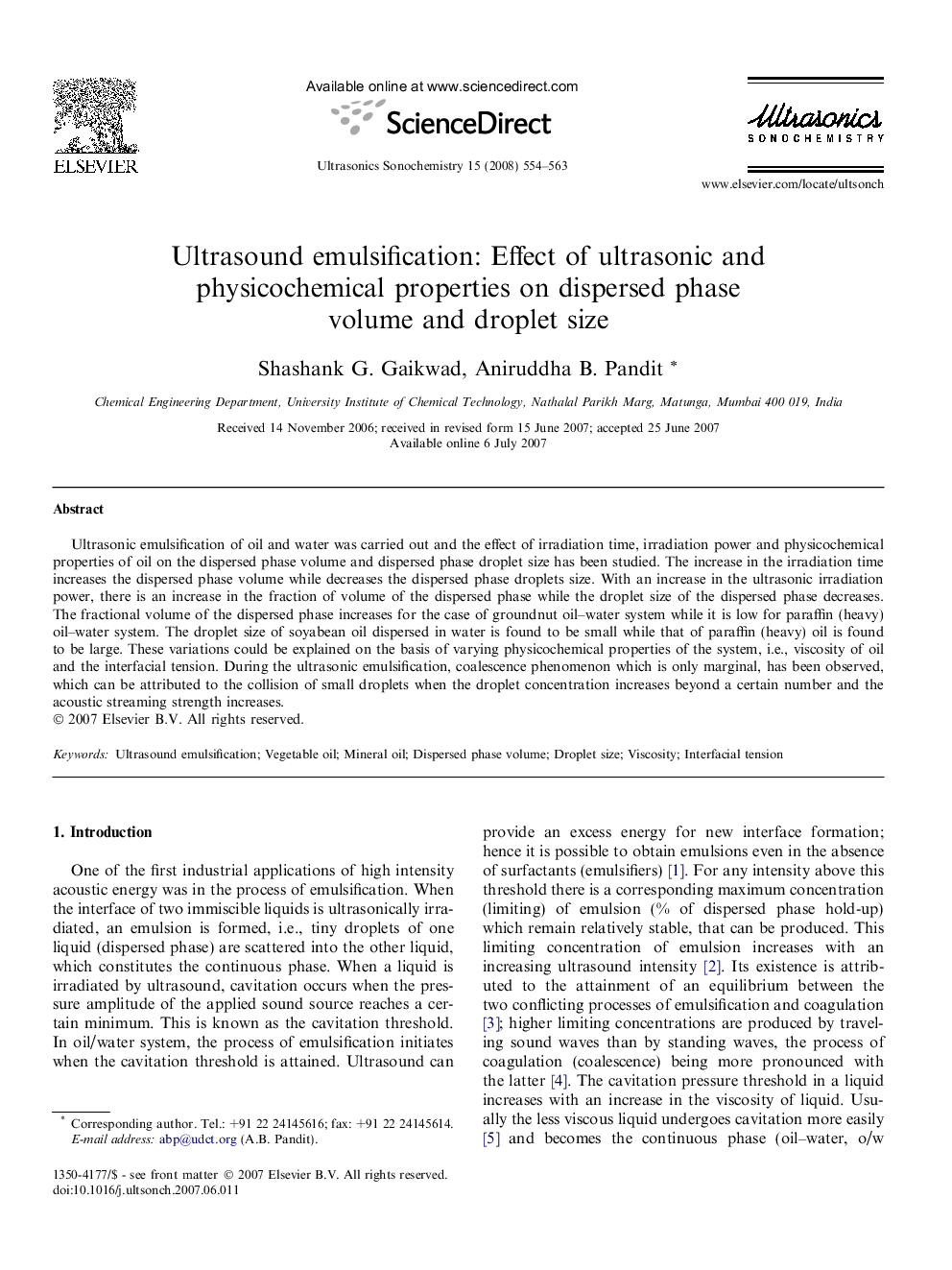| Article ID | Journal | Published Year | Pages | File Type |
|---|---|---|---|---|
| 1266632 | Ultrasonics Sonochemistry | 2008 | 10 Pages |
Ultrasonic emulsification of oil and water was carried out and the effect of irradiation time, irradiation power and physicochemical properties of oil on the dispersed phase volume and dispersed phase droplet size has been studied. The increase in the irradiation time increases the dispersed phase volume while decreases the dispersed phase droplets size. With an increase in the ultrasonic irradiation power, there is an increase in the fraction of volume of the dispersed phase while the droplet size of the dispersed phase decreases. The fractional volume of the dispersed phase increases for the case of groundnut oil–water system while it is low for paraffin (heavy) oil–water system. The droplet size of soyabean oil dispersed in water is found to be small while that of paraffin (heavy) oil is found to be large. These variations could be explained on the basis of varying physicochemical properties of the system, i.e., viscosity of oil and the interfacial tension. During the ultrasonic emulsification, coalescence phenomenon which is only marginal, has been observed, which can be attributed to the collision of small droplets when the droplet concentration increases beyond a certain number and the acoustic streaming strength increases.
